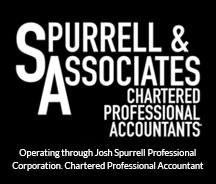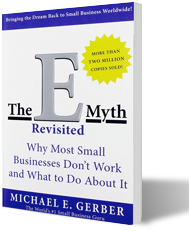Virtual CFO | How To Understand Balance Sheets
When entrepreneurs are looking at their financial information in order to help them make business decisions itís a spiritual CFO, business owners should look at their balance sheet first instead of looking straight at their income statement. The reason for that is because income statements often have errors on it that are much easier to see if business owners understand their balance sheet and look at that first. When business owners are making financial decisions in their business, they should be making the decision with the best information they have available, in order to avoid making decisions that might not be in their best interest. Since 50% of all businesses close their business within five years, and 29% of those failed businesses say that the reason why they failed is because they are running out of money.
Many business owners may not understand why itís important for them to look at the balance sheet first says virtual CFO, when they believe they can make decisions based on income statement. The reason is because looking at their balance sheet first can help business owners understand if there have been any mistakes made. Mistakes are much easier to spot the balance sheet and they are on their income statement. When business owners are using the financial information in their business in order to make decisions such as hiring staff, filling stuff off purchasing large assets, they should be utilizing financial information to their best ability.
An example of a mistake becomes easier to spot in the business owner looks at the Bell Street first, is looking at the credit card balance. Virtual CFO says that if the credit card wells is unchanged from one month to the next, or is a negative balance, that can give a business owner is really good indication that there is an error on the balance sheet. Credit cards being unchanged in two months usually means the credit card charges have not been added to the balance sheet, or they have been added incorrectly. If business owners only looking income statement burst, they are going to miss this obvious year.
Another example of a mistake that becomes obvious when looking at the balance sheet first says virtual CFO, is a business owner has found their loan balance does not decrease each month. The reason why this is important to note, is if the loan balance does not decrease from one month to the next, there is only two different reasons for this, the first one is that a business owner forgot to make the loan. This is incredibly important and should be rectified. The other reason is that the amount was contributed in a different account, which is triggering other errors. If the business owner sees that the balance from one month to the next does not decrease, should give them a good indication that there are errors on the statement, they can fix the error. This error does not become obvious if the business owner is looking at the income statement first.
Business owners are making financial decisions in their business whether to hire staff, that goes, or purchase assets in their business, virtual CFO says that itís extremely important that business owners are using the best information that they have in order to make these decisions. Mother then assume their income statement is accurate, business owners should do a little bit of due diligence and look at their balance sheet first in order to scan for errors so their business decision is based on as accurate information as possible.
The reason why business owners balance sheet first is because there is a good chance that there are errors on the income statement says virtuals CFO. Because of that, an entrepreneur should review their balance sheet first in order to be able to see errors. Errors that are very obvious on the balance sheet are much less obvious if a business owner is looking at the income statement first. The reason for this is because the balance sheet gives the business an idea of whatís in their financial reserves, and what is about to be brought into their business and how much cash a business owner has. In the business owner see all payables are coming in and what payables are going out in order to determine the financial solvency of the business. This is extremely good information to have before looking at the incomes first virtual CFO says business owners should look at their balance sheet first, and the profit and loss statement second.
Itís also extremely important that business owners are looking at their balance sheet in a six month comparative instead of month by month says virtuals CFO. The reason for this is because itís going to bring immediate attention to any variances that are happening in business. If the business owner is looking only one month at a time, the experience these are less obvious. Looking at the six months at a time can highlight trends for business owners, anomalies and itís much easier for business owners to see if their business is seasonal in nature, where those dips and flow are in the business. Any time the business owner sees anything unusual from month to month, they should check that for errors to verify. Six month comparative balance sheet is an exceptionally powerful tool for business owners to review for errors.
Business owners is that they should be looking adding the long term assets property, plant and equipment section of their balance sheets. Virtual CFO says that a business owner should classify as long term assets, our assets and value greater than thousand dollars will have its useful life longer than one year. These are significant assets in a business, a business owner doesnít need to start classifying assets that have a lower value than $1000 Because those are not considered significant on a balance sheet.

